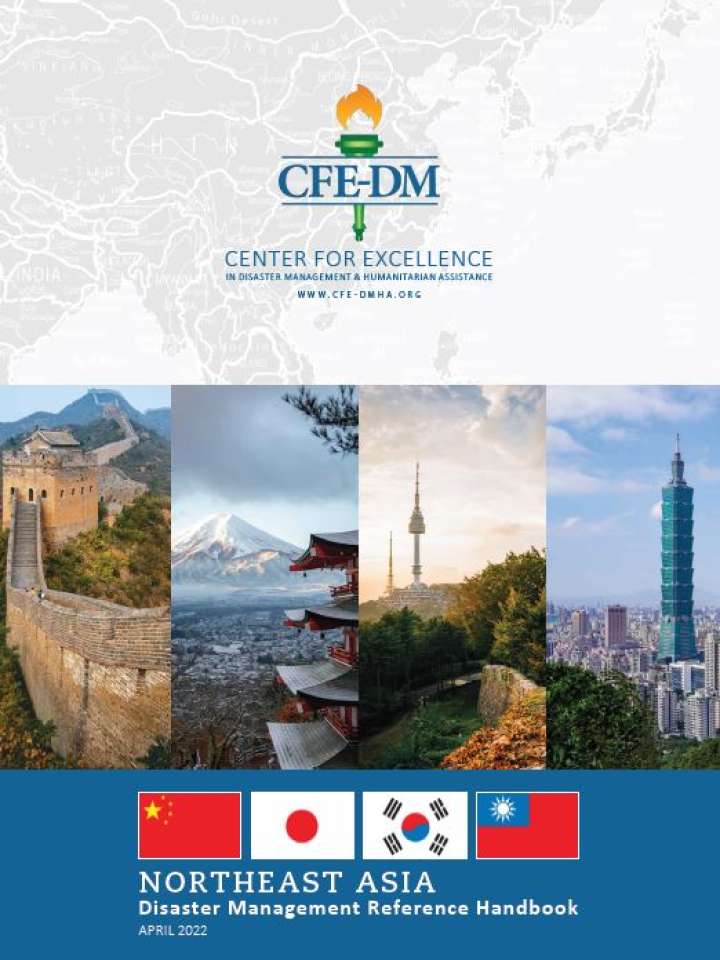Northeast Asia disaster management reference handbook 2022
The goal of this handbook is to provide background infromation for personnel responding to a disasters during which they may interact with government or citizen responders from China, Japan, South Korea, or Taiwan. First, it includes background on the disasters each of the four experiences and past foreign disasters to which they have responded. Second, it details the lead agencies tasked with disaster management at home and overseas. Third, it provides an overview of how each of these players increacts with the U.S. and the broader disaster response and humanitarian communities.
Northeast Asia accounts for about one-third of all Asia-Pacific disaster-related fatalities over the past decade. In addition to the human costs, annual economic losses from disasters can be massive. Many of the region’s people live in high risk, multi-hazard areas that are also served by well-developed infrastructure that is similarly exposed to hazards. The risk landscape includes biological hazards alongside floods, storms, earthquakes, volcanic eruptions, and tsunamis. Moreover, the effects of climate change will exacerbate some hazards. Based on experiences and frameworks, the People’s Republic of China, Japan, the Republic of Korea, and Taiwan all bring different levels of expertise to humanitarian assistance and disaster relief.
Explore further
